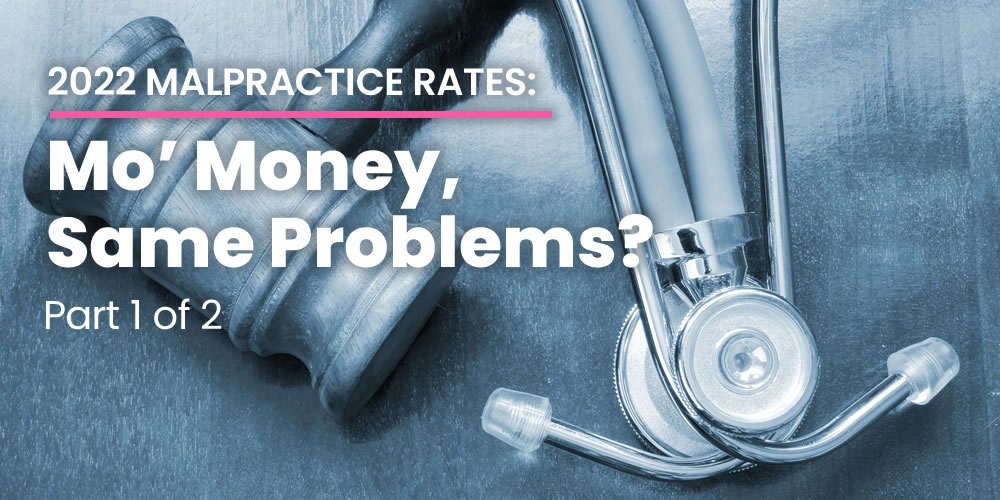Medical Malpractice Insurance is a specialized type of professional liability insurance designed to protect healthcare providers from lawsuits claiming medical negligence, errors, or omissions that result in patient harm. It is essential for doctors, nurses, dentists, and other healthcare professionals to safeguard their careers and financial well-being.
Key Elements of Medical Malpractice Insurance:
1. What It Covers:
- Medical Errors or Negligence: Claims of mistakes made during diagnosis, treatment, surgery, or patient care that lead to injury or death.
- Failure to Provide Proper Care: Lawsuits involving allegations that the healthcare provider did not adhere to the standard of care expected in the medical profession.
- Wrongful Death: Coverage for claims that a healthcare provider’s actions resulted in a patient’s death.
- Legal Defense Costs: Attorney fees, court costs, and any settlements or judgments resulting from a malpractice claim, regardless of whether the provider is at fault.
- Punitive Damages and Compensatory Damages: Some policies cover punitive damages (designed to punish wrongdoers) and compensatory damages (designed to compensate the patient for injury or harm).
2. Who needs medical malpractice insurance?
- Doctors and physicians: including general practitioners, surgeons, anesthesiologists, and specialists.
- Nurses and Nurse Practitioners: In some cases, malpractice claims can be made against nurses for errors in patient care.
- Dentists and Dental Hygienists: Dental professionals also face the risk of malpractice claims.
- Chiropractors, Psychologists, and Other Healthcare Providers: Any licensed healthcare professional can face malpractice claims and should have coverage.
- Medical Facilities and Clinics: Hospitals, clinics, and practices should also carry malpractice insurance to protect the organization and its employees.
3. Types of medical malpractice insurance:
- Claims-Made Policies:
- Coverage is provided only if the claim is made while the policy is active.
- If the policy is canceled or not renewed, claims filed after the policy ends won’t be covered unless you purchase tail coverage, which extends the protection for incidents that occurred during the policy period.
- Typically less expensive than occurrence-based policies.
- Occurrence-Based Policies:
- Provides coverage for incidents that occurred while the policy was active, even if the claim is made after the policy expires.
- More expensive, but offers broader long-term protection.

4. Cost of Medical Malpractice Insurance:
- Premiums vary depending on several factors, including:
- Specialty: Higher-risk specialties, like surgery or obstetrics, have significantly higher premiums because of the greater likelihood of malpractice claims.
- Location: Premiums vary by state, as some states have higher litigation rates or more favorable conditions for malpractice lawsuits.
- Claims History: A healthcare provider with a history of malpractice claims will pay more for coverage.
- Policy Limits: Higher coverage limits (the maximum the insurer will pay for a claim) result in higher premiums.
- Average Costs:
- Physicians can pay anywhere from $4,000 to $50,000 annually, depending on their specialty and geographic location.
- Surgeons and specialists typically face higher premiums than general practitioners.
5. Common Risks Covered by Medical Malpractice Insurance:
- Misdiagnosis or Delayed Diagnosis: When a healthcare provider fails to diagnose or delays diagnosing a condition, leading to harm or worsening of the patient’s condition.
- Surgical Errors: Mistakes during surgery, such as operating on the wrong body part or leaving surgical instruments inside the patient.
- Medication Errors: Prescribing the wrong medication or dosage, resulting in harm to the patient.
- Anesthesia Errors: Mistakes made during the administration of anesthesia, which can lead to severe complications or death.
- Failure to Obtain Informed Consent: If a provider fails to properly inform a patient of the risks associated with a treatment or procedure, and the patient suffers harm as a result.
6. Legal Protection and Financial Security:
- Legal Defense: Even if a healthcare provider is not found at fault, legal defense costs can be significant. Medical malpractice insurance ensures that you have legal representation and that defense costs are covered.
- Settlements and Judgments: In the event that a settlement or judgment is awarded, insurance provides the necessary financial backing to pay for damages, protecting the provider’s personal and business assets.
- Professional Reputation: Defending against a malpractice claim without insurance can be financially and emotionally draining, potentially harming your professional reputation. Having malpractice insurance ensures that you are well-protected during the litigation process.
7. State Laws and Requirements:
- State Mandates: Some states require healthcare professionals to carry a minimum amount of malpractice insurance, while others do not mandate it but strongly recommend it.
- Tort Reform Laws: Some states have implemented tort reform to limit the damages that can be awarded in malpractice cases, which can influence the cost and availability of malpractice insurance.
- Medical Licensing Boards: Many licensing boards require proof of malpractice insurance as part of the licensing or certification process for healthcare providers.
8. Tail and Prior Acts Coverage:
- Tail Coverage: Extends protection for claims made after a claims-made policy ends. This is crucial for healthcare providers changing jobs or retiring, as malpractice claims can arise years after the incident.
- Prior Acts Coverage: Provides protection for incidents that occurred before the policy start date, ensuring continuity of coverage for prior incidents.
Benefits of Medical Malpractice Insurance:
- Financial Protection: Covers costly legal fees, settlements, or judgments that could be financially devastating to a healthcare provider.
- Peace of Mind: Allows healthcare professionals to focus on patient care without the constant worry of potential lawsuits.
- Reputation Management: A professional defense team can help manage your case and protect your professional reputation throughout the legal process.
Conclusion:
Medical malpractice insurance is an essential safeguard for healthcare providers, offering protection against the financial and legal repercussions of malpractice claims. It covers legal defense costs, settlements, and damages, ensuring that healthcare professionals are protected from potentially career-threatening lawsuits. Choosing the right type of policy—whether claims-made or occurrence-based—and securing adequate coverage limits are key to ensuring full protection.
Would you like help exploring options for specific medical specialties or understanding state-specific malpractice requirements?
